
 010203
010203These experiences includes industrial design, graphics, the interface, the physical interaction and the manual.
Many designers would usually work on a small part of UX. Take for instance defining user personas, flows, wireframes, and conducting usability testing; the focus lies only on interface interactions. COVID-19 pandemic challenges designers to design in a more holistic approach to cater to changing behaviours. There are now more demands for designers to adapt to the current challenges and to think holistically – in line with Donald Norman's initial vision of User Experience Design.
Many industries are trying to adapt by incorporating technology that they may have never utilised before. According to Google, COVID-19 has accelerated the needs for digital adoption; for example, search interest in online shopping growing two-fold worldwide and counting.
Due to the exponential increase in digital adoption, the role of a UX designer is becoming more complex. The more the adoption, the more chances our solution is going to be used by diverse users. This diversity requires specific considerations to cater to the disabilities, understanding the situational condition, environment, behaviour, culture, and even mental impact. The umbrella term that covers all the listed considerations is known as inclusive design.


Building an understanding and empathy towards different cultures is an important trait all designers need to practice and have. This is an essential mindset that would allow designers to design solutions based on culture and market context.
Southeast Asia culture is diverse and complex if we break it down one by one, but we can see the overview from Erin Mayer in her book, The Culture Map (2014).
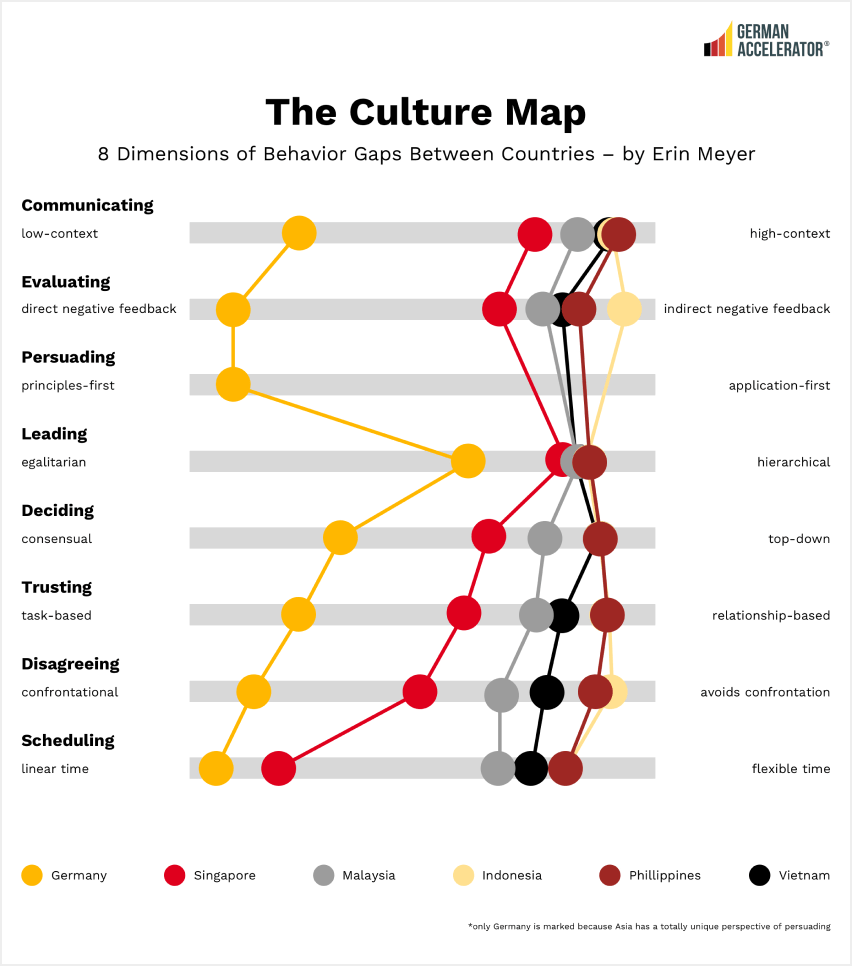
Southeast Asians generally have high-context cultures.
Hierarchy, Distance between boss and subordinate is high, thus communication follows the hierarchical chain.
Southeast Asians give indirect negative feedback.
Top-down approach, meaning those with higher position/authority are usually the ones making decisions.
Action-first, discussions are approached in a practical, concrete manner.
Southeast Asians prefer to work with flexible time frames, time is often a suggestion and less strictly followed.
Southeast Asians tend to avoid conflict, they focus on harmony and avoid public and open arguments.
Southeast Asians rely on relationship-based trust, even in business.

In addition, Yoel Sumitro studied Geert Hofstede's book on how cultures influence values in the workplace. There are 6 cultural dimensions which stem from that work.
These include:
These are set frameworks that could identify a country's culture.
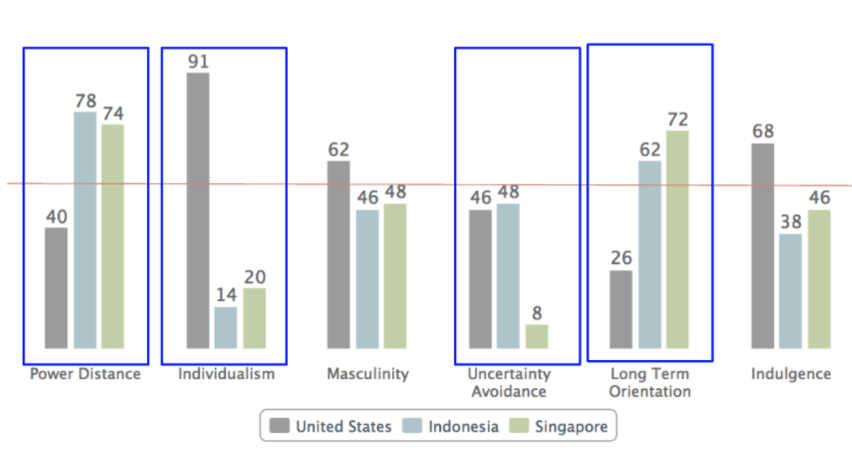
We take one of his examples on how we can use this framework to paint the cultural differences between the US and Southeast Asia market.
Individualism (IDV)
measures the degree of societal interdependence among its members.
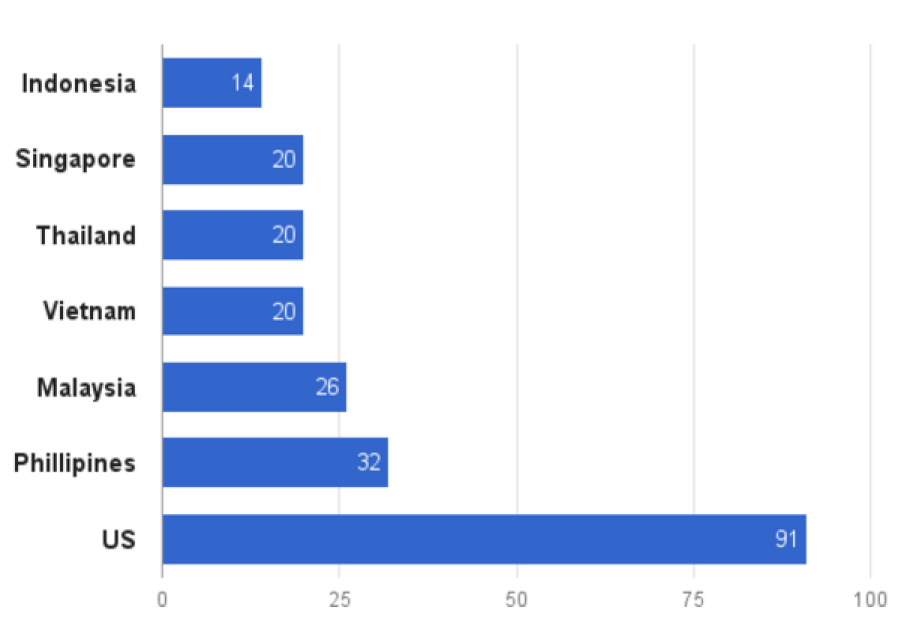
Southeast Asia Countries tend to have low IDV index, meaning:
According to Britannica, language patterns in Southeast Asia are highly complex and are rooted in four major language families: Sino-Tibetan, Tai, Austro-Asiatic, and Austronesian (Malayo-Polynesian). Also it must be noted that there are countless languages as well as dialects are used in the region.
Apple Thai keyboard layout vs Thai standard
Thai keyboard layouts are generally something Thai speakers and Thai language learners have little problem with because of a de facto standard, although there are three specific standards, in practice (along with ISO and ANSI layouts).

See the following example on how different cultural contexts impact design decisions in Southeast Asia.
North American vs Southeast Asian e-commerce
Most e-commerces in Southeast Asia are super ecosystems that offer more categories and services. To help users recognize all of those easily these e-commerce utilize much of visual cues and extensive description.
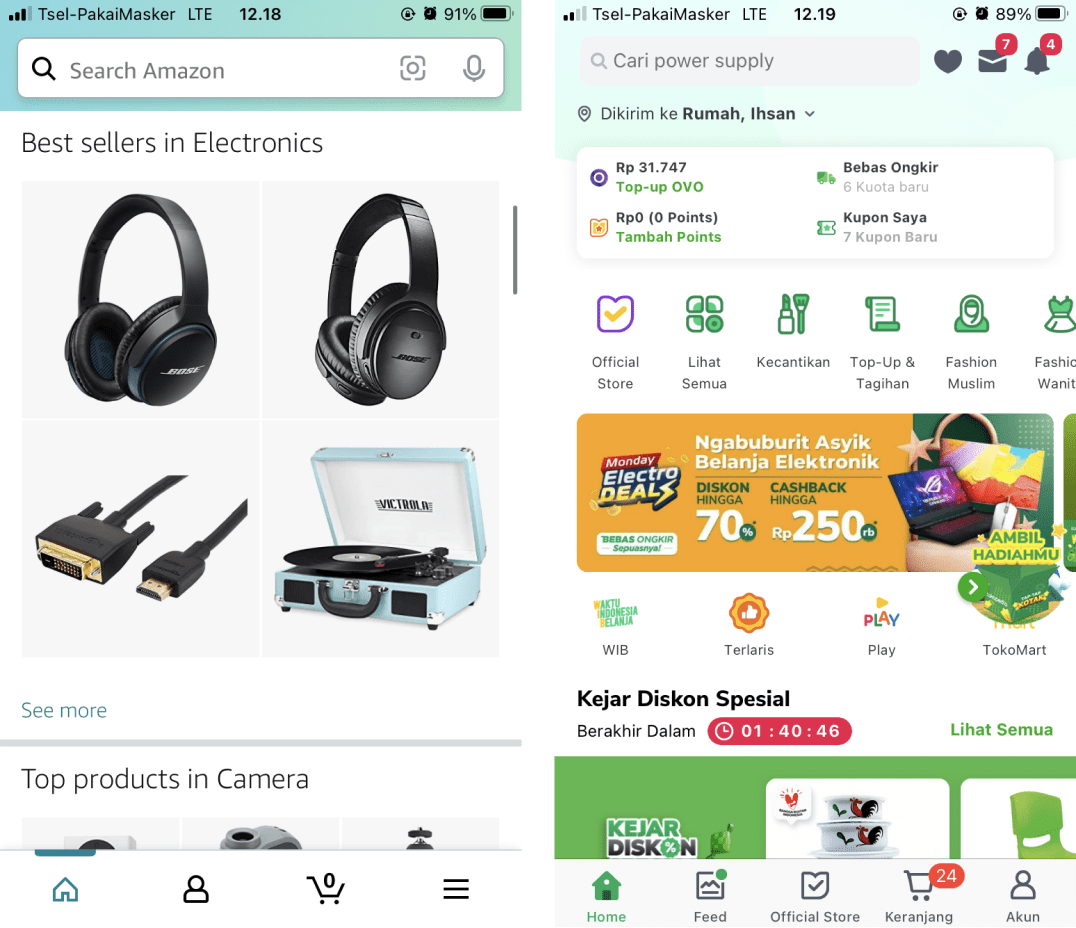
The above example support the importance of understanding cultural context when designing digital products. If we're looking to distribute digital products outside of our home region, we need to understand the cultural characteristics of the target region that might influence the needs and regional legal requirements that could be unique and different from the original market.
In its 2014 Disability Rights in Southeast Asia report, Swedish International Development Cooperation Agency (SIDA) indicates many countries still use a narrow definition of disability. This number is expected to increase in the coming decades with an ageing population, longer life expectancy, and an increasing number of injuries resulting from situational and natural disasters among other factors.
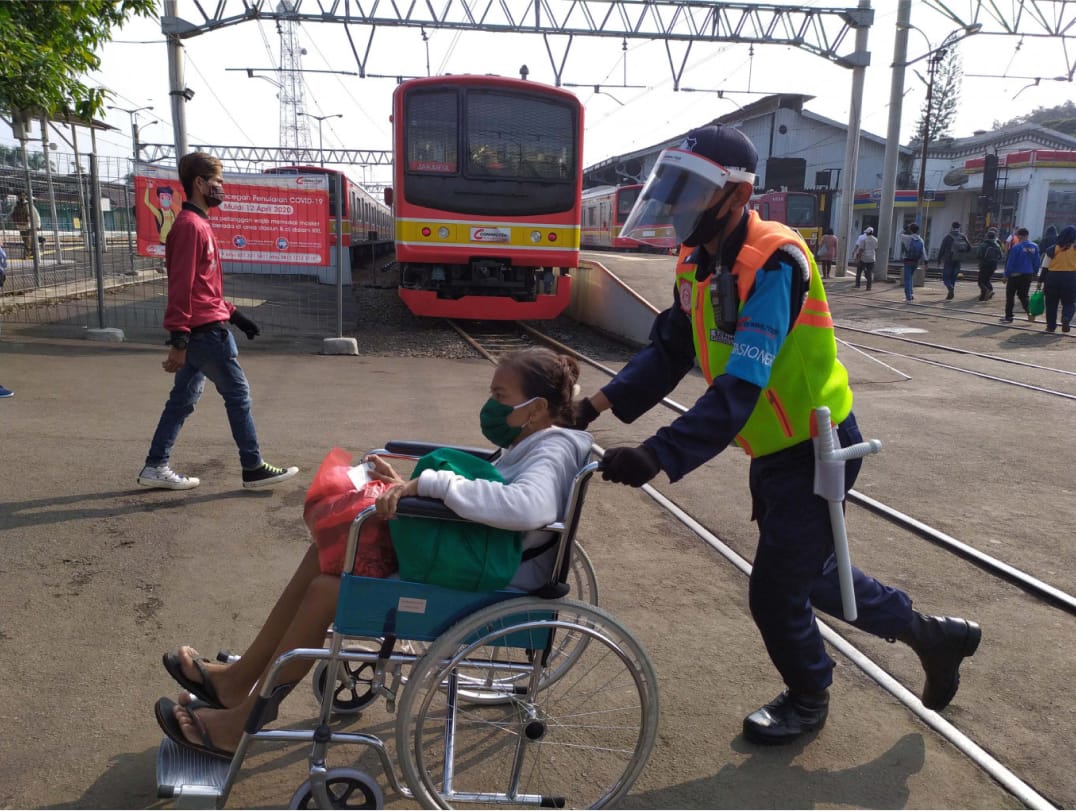
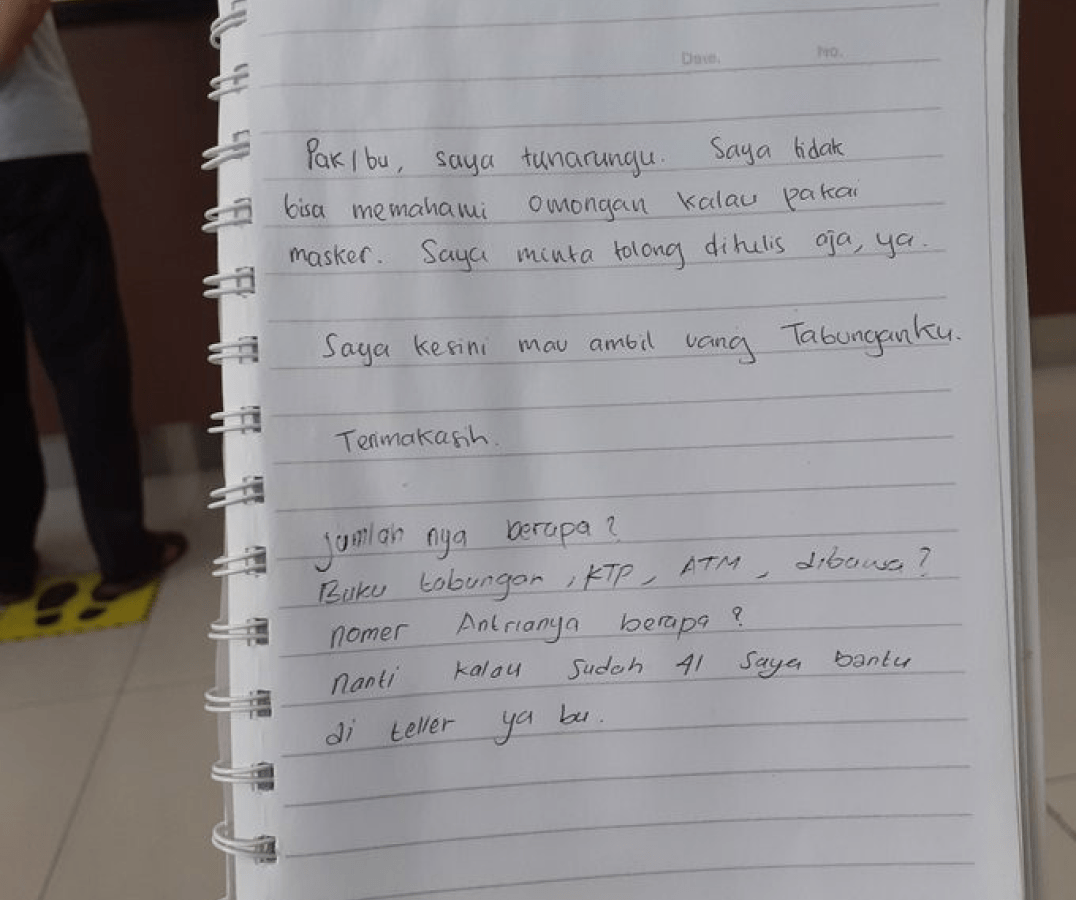
These groups are in a particularly high risk of being left behind in the development process. In Indonesia, disabled people have lower educational attainment, worse health, fewer economic opportunities and lesser access to public services. The majority of disabled people in Indonesia do not use assistive devices such as hearing aids, walking aids, etc.
Product teams who are generally passionate about accessibility face challenges because of the lack of policies and regulations from the government that pushes product teams to incorporate accessibility.


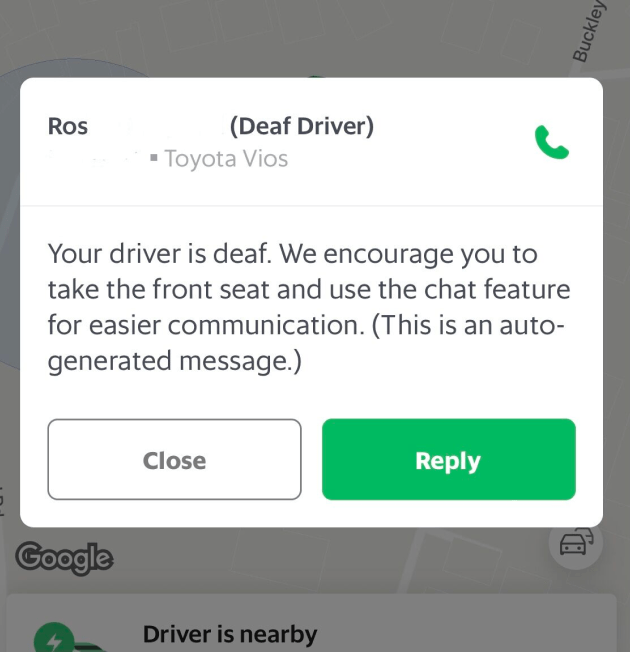
Grab integrated their auto generated message with driver disability profile so the passenger can get expectations beforehand.

Grab Indonesia also provides dedicated services for diffable called GrabGerak.
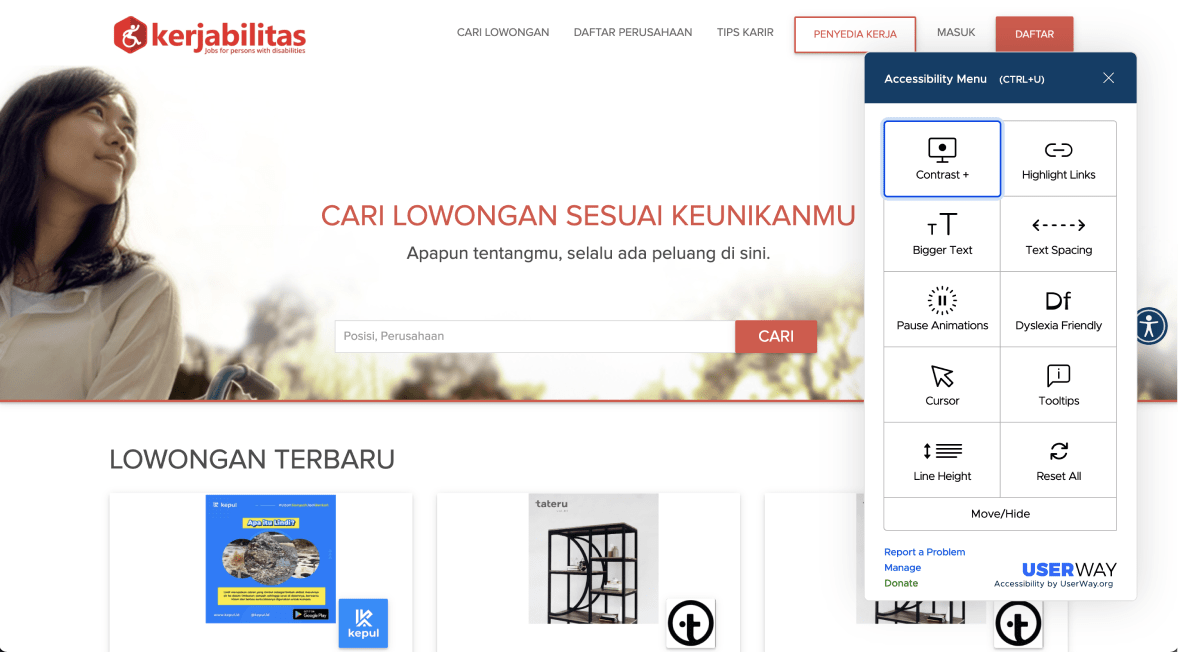
Kerjabilitas is an job vacancy website specially designed for those who have disabilities.
This is the second most important aspect of inclusivity, with challenges in Southeast Asia The main languages in Southeast Asia are Lao, Thai, Burmese, Khmer, Vietnamese, Tagalog, Malay, Indonesian and also a number of Chinese dialects. Every one of these languages derives from distinct sources and has unique cultural characteristics.
In Indonesia, there are 700 spoken local languages. This makes up about 10% of the world's languages. Different structures are used when conversing in formal Bahasa Indonesia vs informal situations. Also, different regions would have different local phonetics, words & sentence structures. These cannot be found in dictionaries & may modify the meaning if used inappropriately.
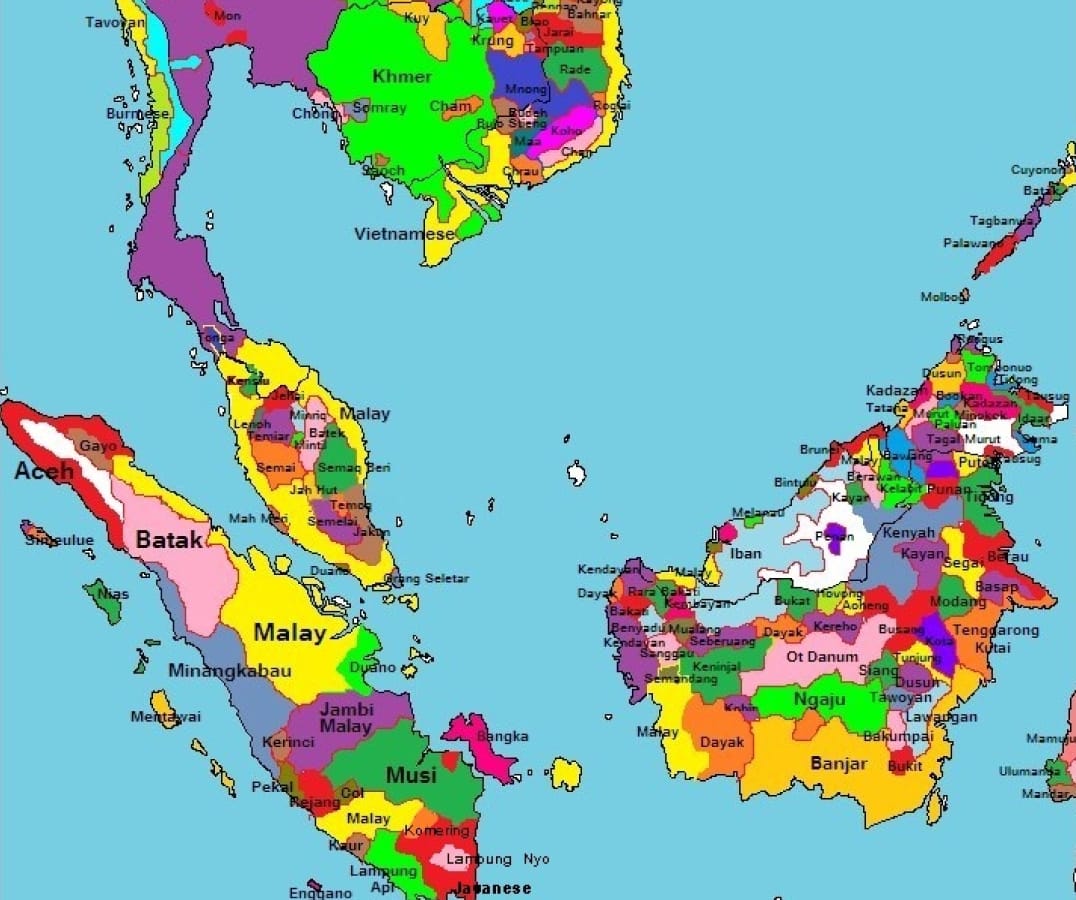
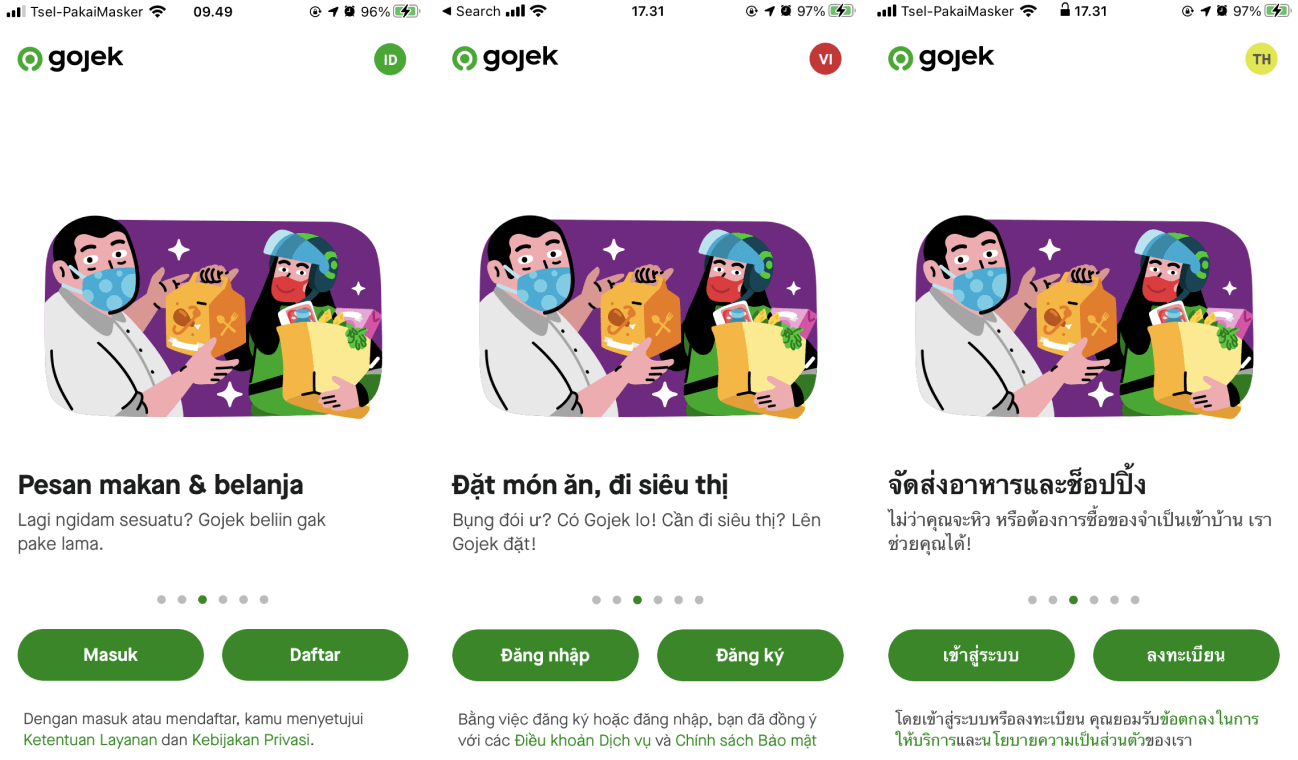
Gojek is known for their hyperlocal approach, even though Indonesia, Vietnam, and Thailand have very distinct languages, but since they have similar culture profiles Gojek applied similar visual language and communication style.
Connectivity is a prevalent issue in Southeast Asia. With more than 17,000 islands, Indonesia faces a unique challenge in providing consistent & fast connectivity in the archipelago. Only around 56% of the 268 million population have proper connection to the internet.
According to an article in The Conversation, many Indonesians still cannot afford stable & unlimited internet connection, even though there's an increasing number of internet penetration every year. People with access to the Internet often experience speed discrepancy due to different connection infrastructure. People living in the city centres often enjoy a significantly faster Internet connection compared to those living in less developed areas.


Avoid unnecessary components and focus on functionality to reduce the data load for limited connection.
Optimize the efficiency and the hygiene on the back and front end side to ensure the reliability in the worst case scenario.
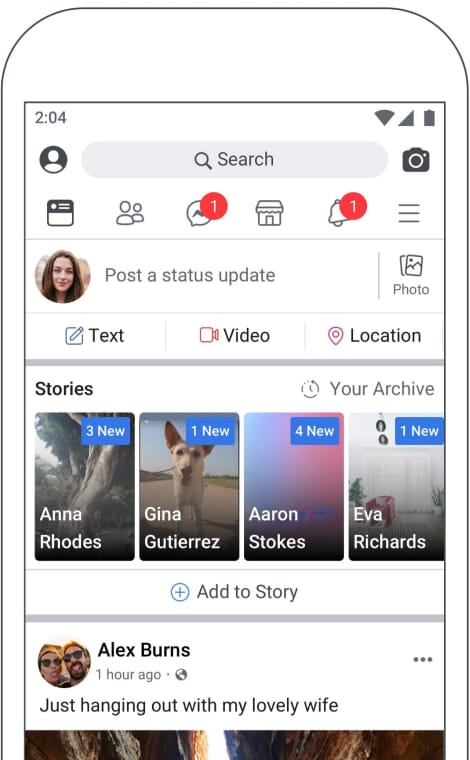
Facebook launched the lite version in the US in 2015. The purpose is to serve people who are limited with internet reliability and device limitations.
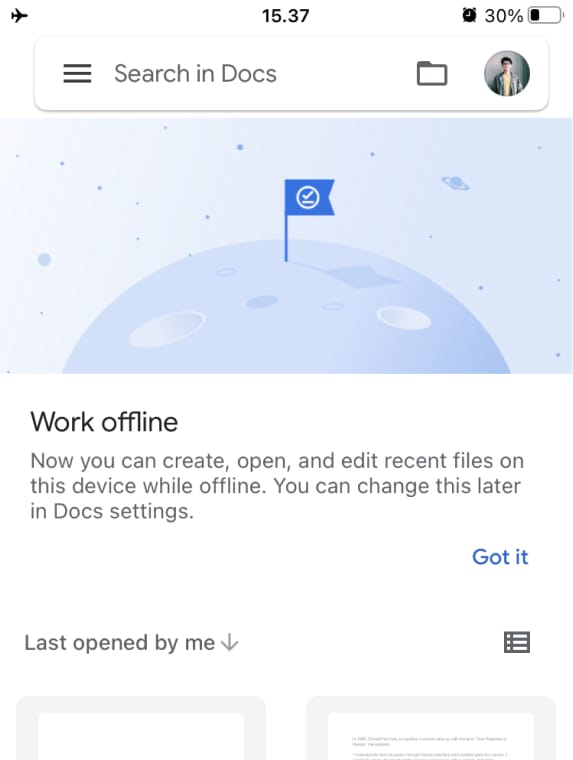
Most of Google workplace services are online based and Google is figuring out that not all their users have a good internet connection constantly, and it is too risky if there is no backup solution if users got a bad connection or unconnected in the middle of their work.
Indonesia, like many other countries in Southeast Asia, greatly values religious belief as part of their way of living. As a result, most Indonesians welcome products that promote religious belief and values.
If you take a look at the lifestyle products (food, skin care) on many Indonesian stores, you will find many of them halal-certified. This certification is issued by the government to assure Muslims that these products are in line with Islamic set of values.
These set of values not only applies for lifestyle products like food and body products, but also more and more grow in financial activities. Rather than conventional banking, some Muslim groups prefer sharia islamic banking and finance. Sharia banking does fair profit sharing, as opposed to bank interest, a thing that is avoided by Muslim when doing financial activities.
This phenomenon creates an opportunity to tailor financial products for people who do not want to be involved in banking interests. Moreover, to people (generally older generation) who does not trust putting their money “online.“---If it’s too easy, it’s too risky. So that’s why some of the conventional banks also provide sharia financial services to cater to Indonesia’s Muslim population, as one of the fastest growing customers in the world today.


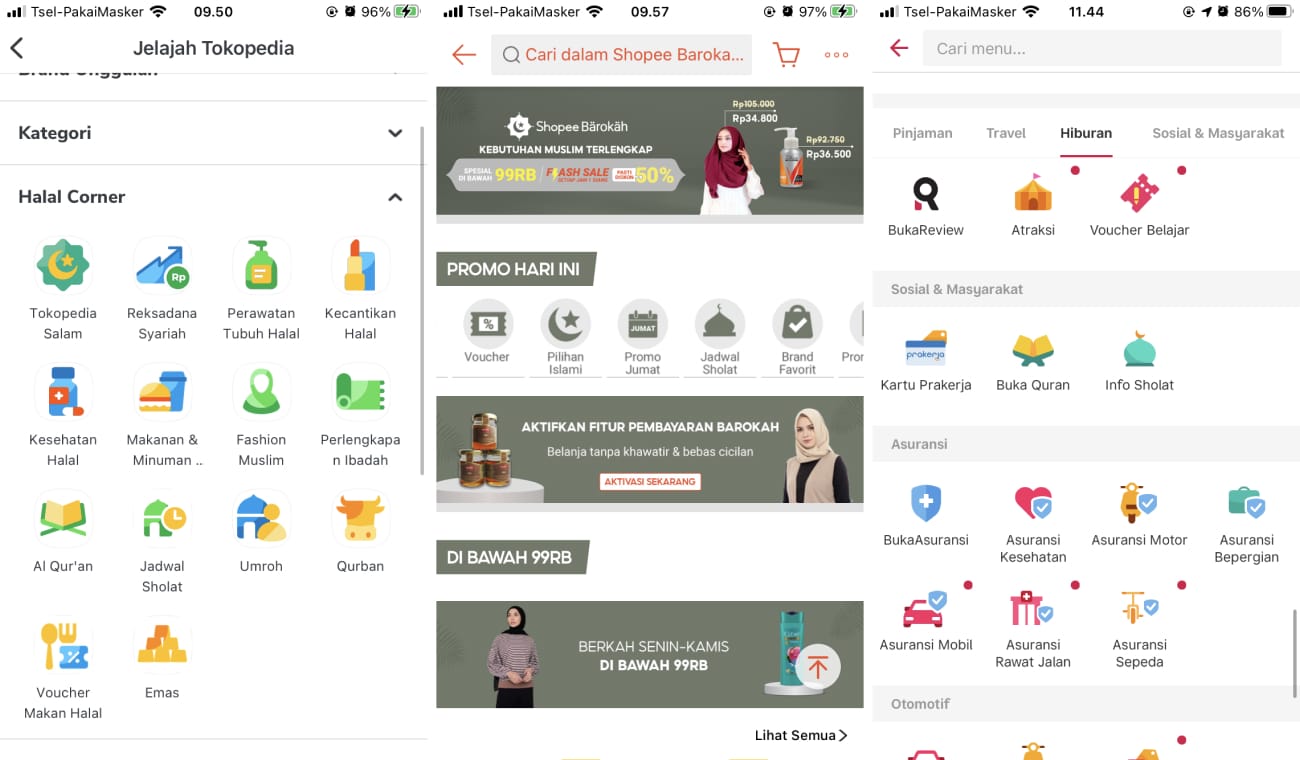
Tokopedia, Shopee, Bukalapak provide 'muslim corner' with products or services that follow islamic norm and rules. For example, syar'i investment, halal products, and sholat schedule.
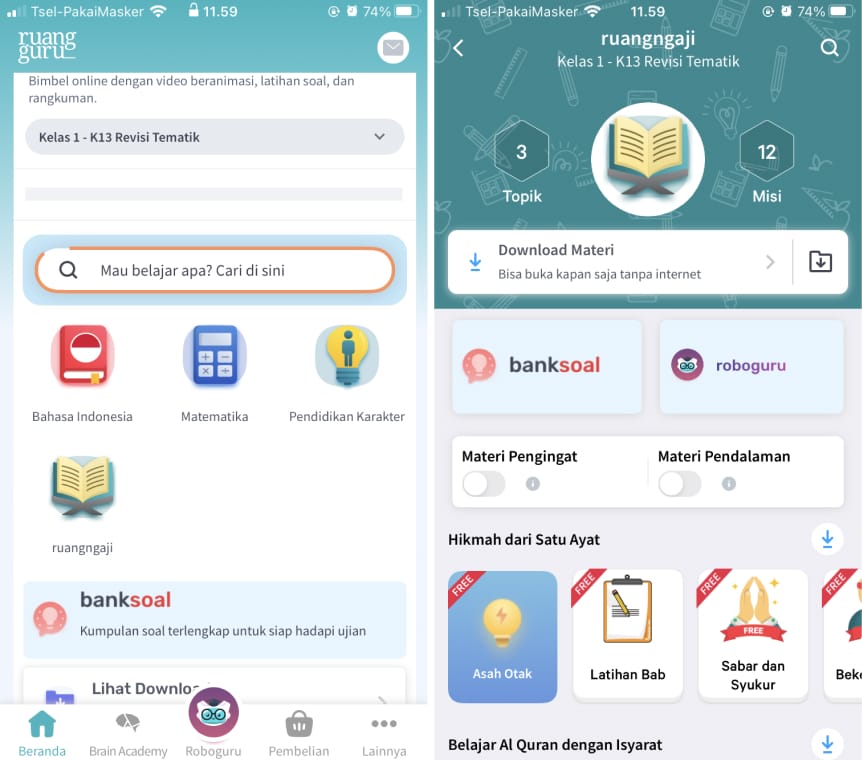
Ruang Guru an education tech product includes Al-quran lesson as part of culture adjustment
Southeast Asians score relatively low on individualism. In a high context culture, people prefer collectivism and do things together. There is a term called "Gotong Royong" in Indonesia, which means (literally) mutual assistance. People are more motivated when they learn and adopt new things, such as technology or digital products, as a community. In most instances, one of the best ways to promote new products or services in rural areas is through human presence. For example, people favor visiting a physical store or office to get onboarded, paying for e-commerce, validating ID or confirming a document. This is an important part of a user journey because the technology infrastructure is not yet mature with bureaucratic government processes in place. Those looking to deploy solutions in Indonesia, need to consider a mix and match between analog and digital processes. Combining analog & digital approaches might be the best way to deal with those who do not trust digital products or services.
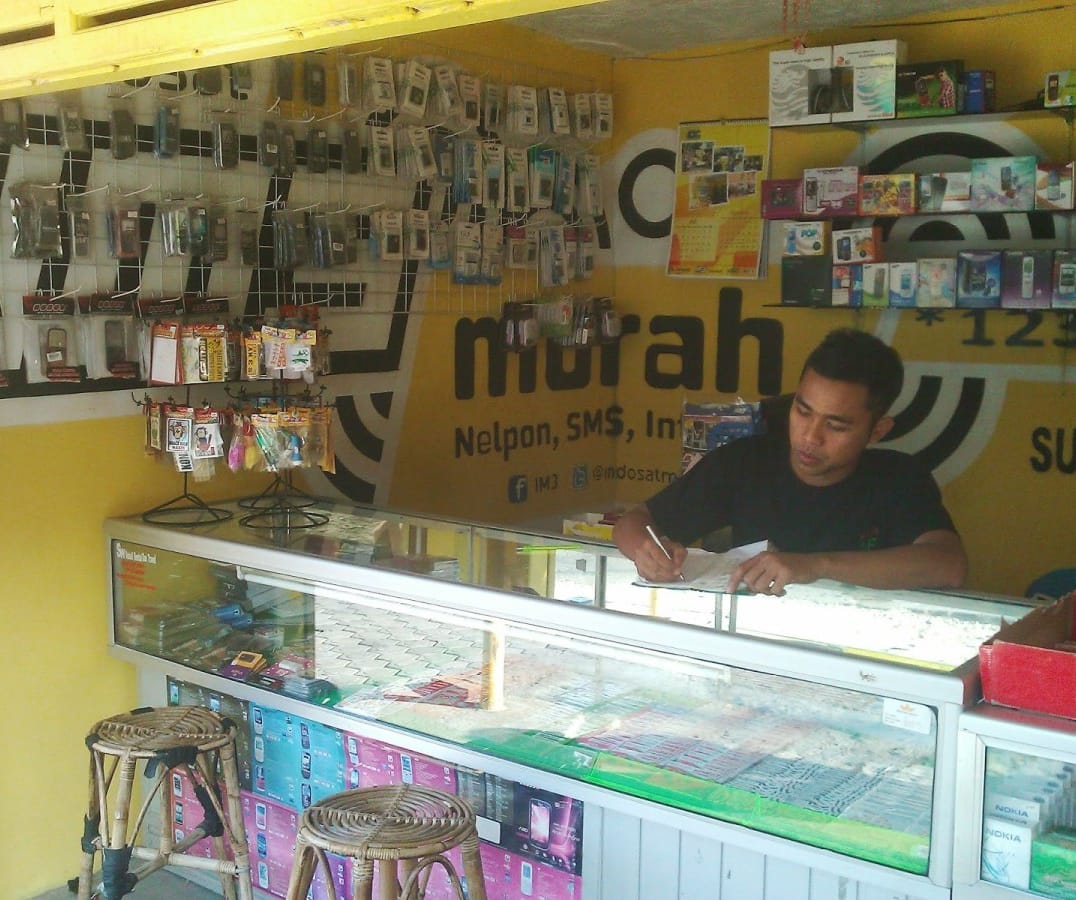

Identify the overall user journey, does it make it hard for users if we are going to fully-automate our product? Think about blockers.
Once blockers are identified, find ways to smoothen the journey, even if it means manually doing the activity, but will smoothen the overall journey.
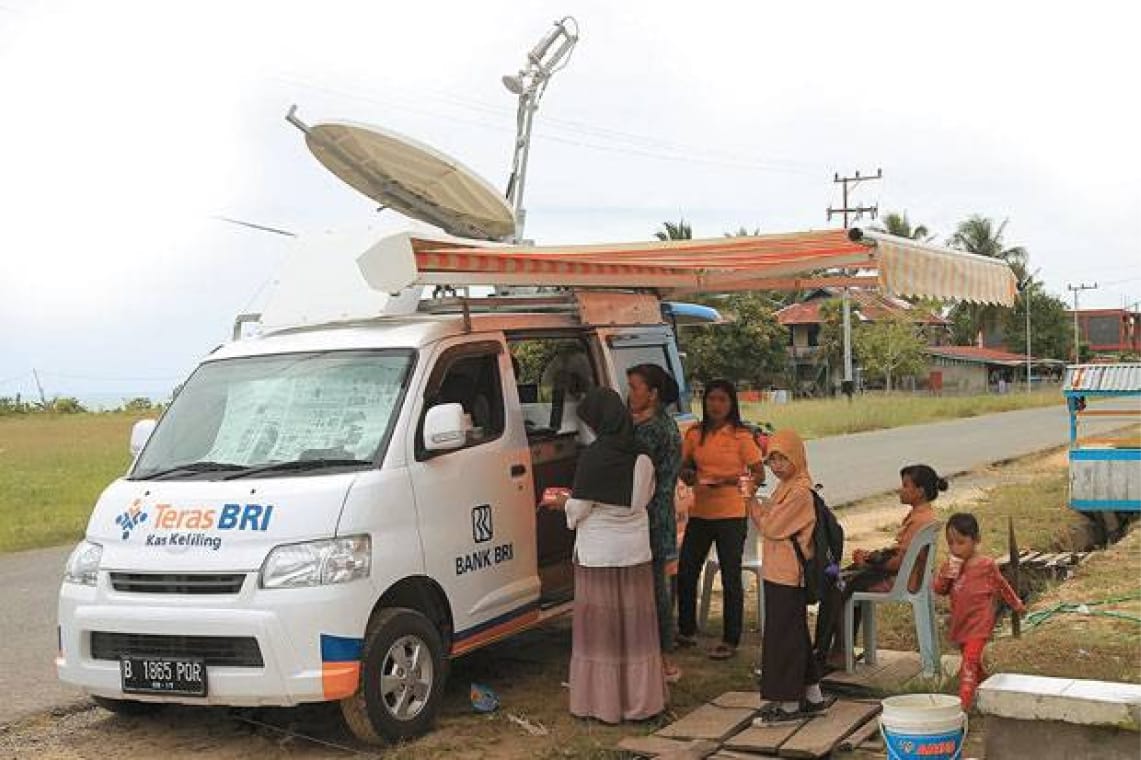
People who live in rural areas don't get used to digital transactions. They usually save their cash money in a physical vault because there is no bank office around their neighborhood. Teras BRI comes to serve them by providing a mini and mobile bank.
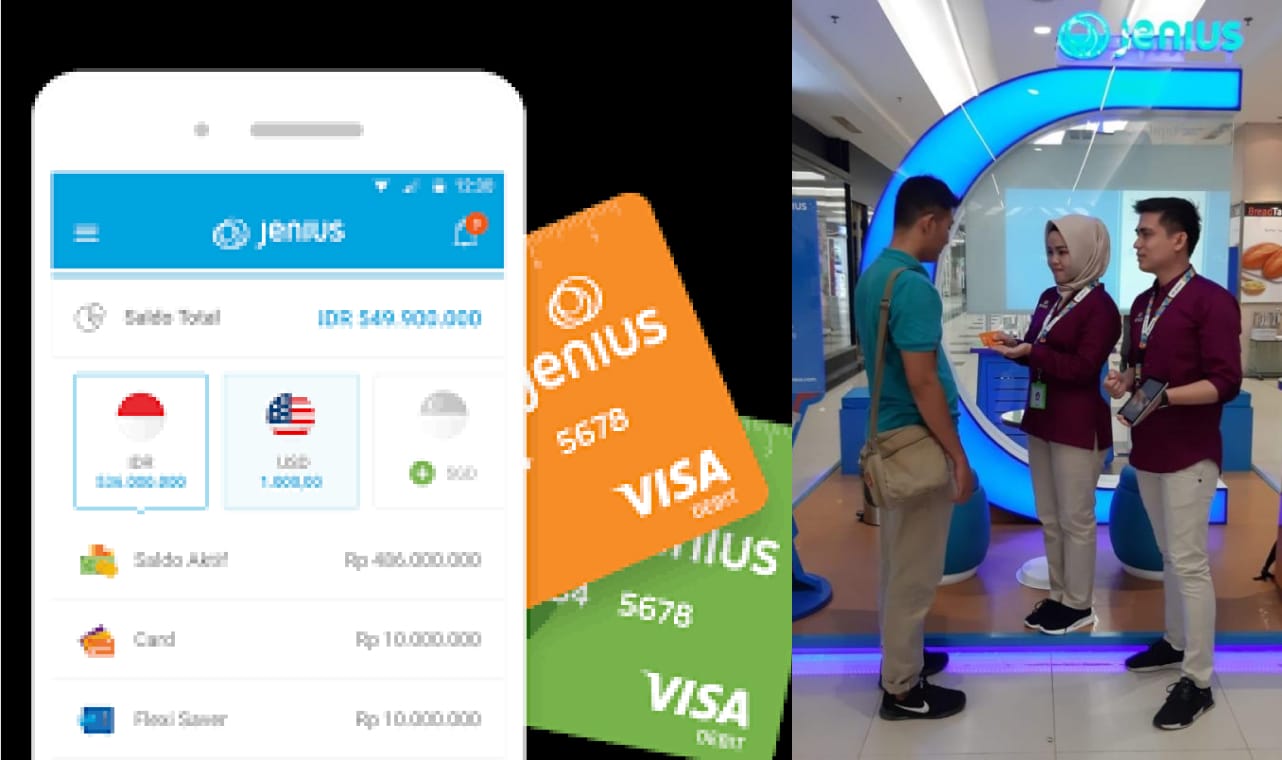
Jenius is an application based bank service in Indonesia. Even though their services are mostly digital, the onboarding process that they use is still manual by spreading mini booths around their targeted area.
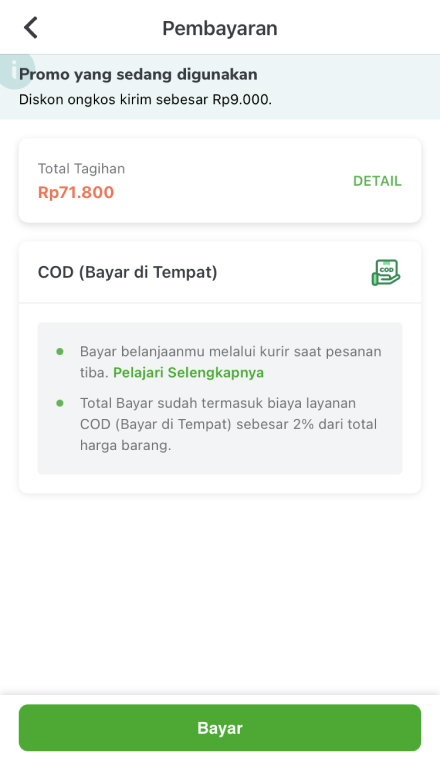
(Tokopedia COD) Some of Indonesia's e-commerce products provide COD payment methods with reason being that some users don't trust online transactions yet.
This might not be a direct design problem, however, this is a part of the inclusive design framework that needs to be considered, specifically affecting the product performance indicators. Even though we've considered accessibility, culture, connectivity and others, our products or services might not reach diverse users if they can't afford it.
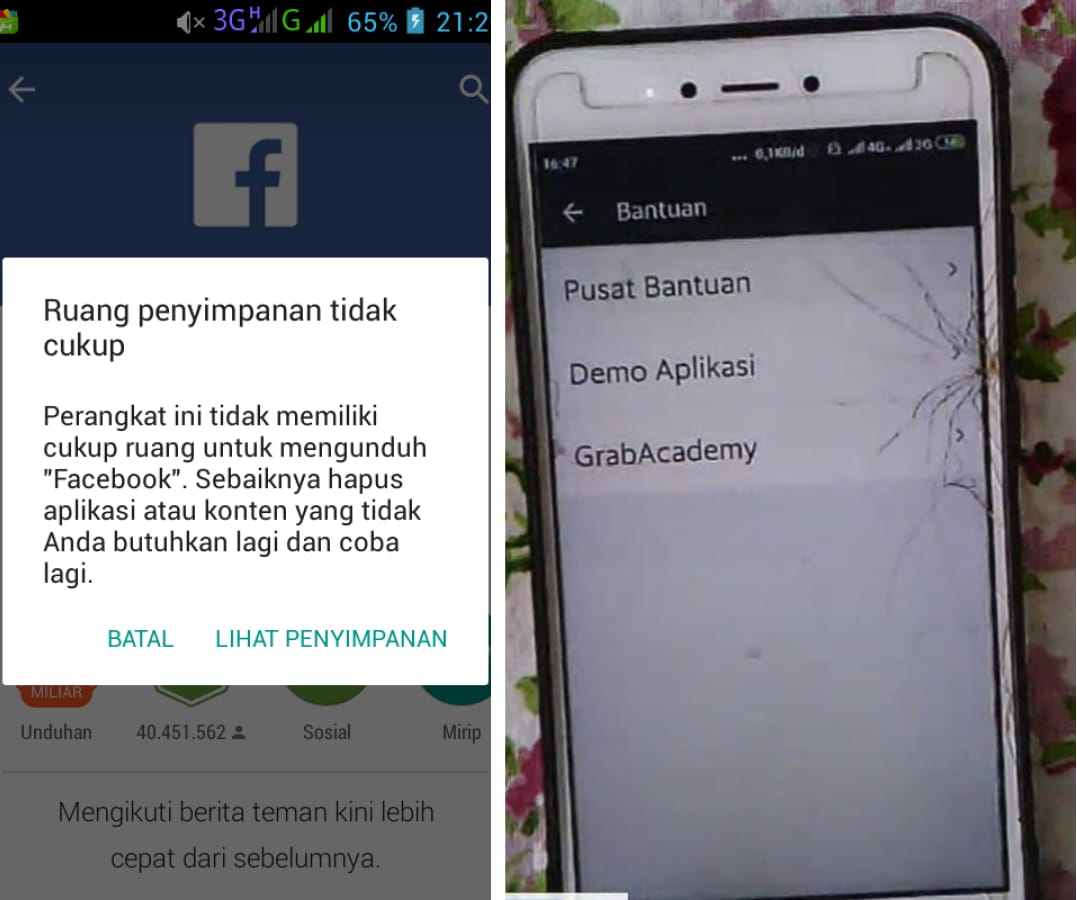
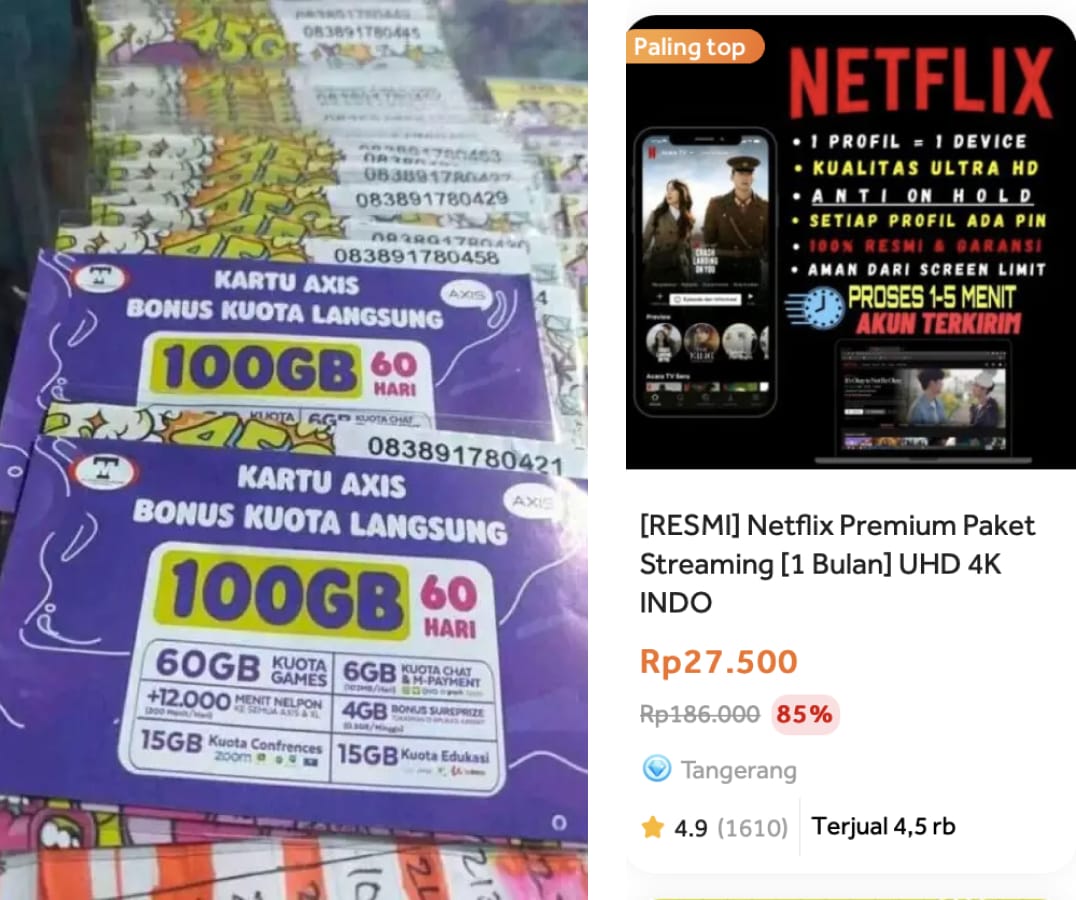
There are 2 challenges for this point:

Price wars are also pretty common in the market, and oftentimes, users are more forgiving on the quality of product or service if they can get a better price.
Consider alternative currency (e.g. some users might be willing to exchange their time and effort by playing a gamification feature for points/coins).
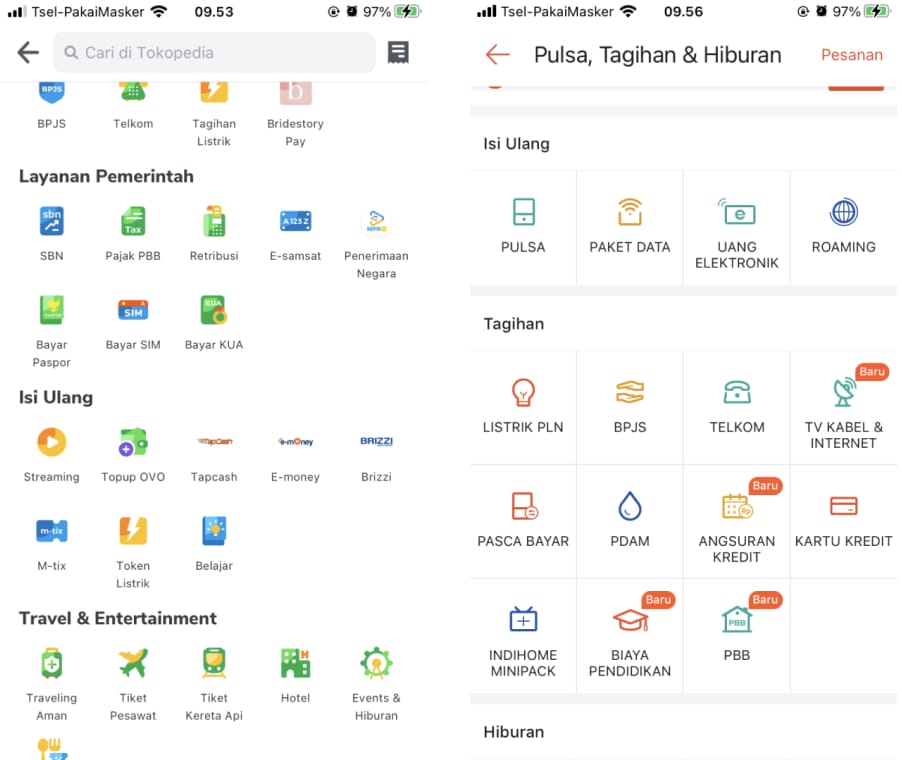
We see a lot of super-app development that could solve storage issues. Super-app provides all the features within one app, saving users precious space on the phone.

Spotify provides a premium mini plan to adapt with Indonesia 'Ketengan' habit. This plan option is only available in Indonesia and India.
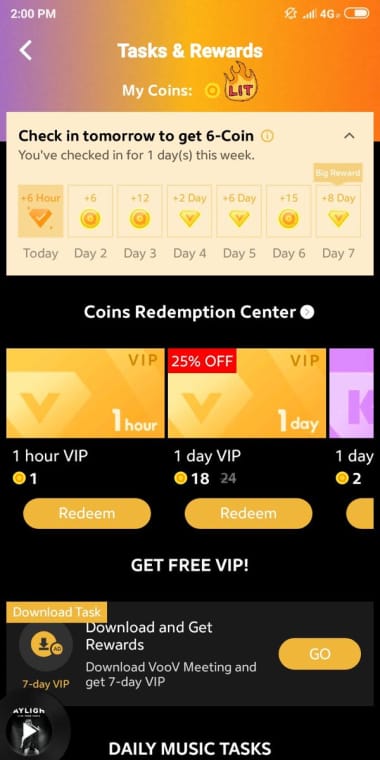
Joox is a streaming music app in Asian market applied gamification and 'coin' exchange system that makes users able to taste premium access without paying it first.
Access to financial services should be a fundamental right for everyone and according to KPMG, only 27% of those living in Southeast Asia have a bank account. This leaves a huge gap in banking penetration with around 438 million unbanked individuals. In poorer countries like Cambodia, the numbers are even lower at just 5%. Increasing access to financial service is a consideration that inclusive financial organizations have to consider.
Fintech organizations are faced with a great challenge to bank the unbanked, and according to The ASEAN Post, this can be translated as an opportunity. Traditional banking and financial firms are starting to take note of the potential of digital transformation. With a tremendous number of innovations from tech-heavy Chinese giants like Alibaba and Tencent, the landscape of banking in the region is set to shift radically.

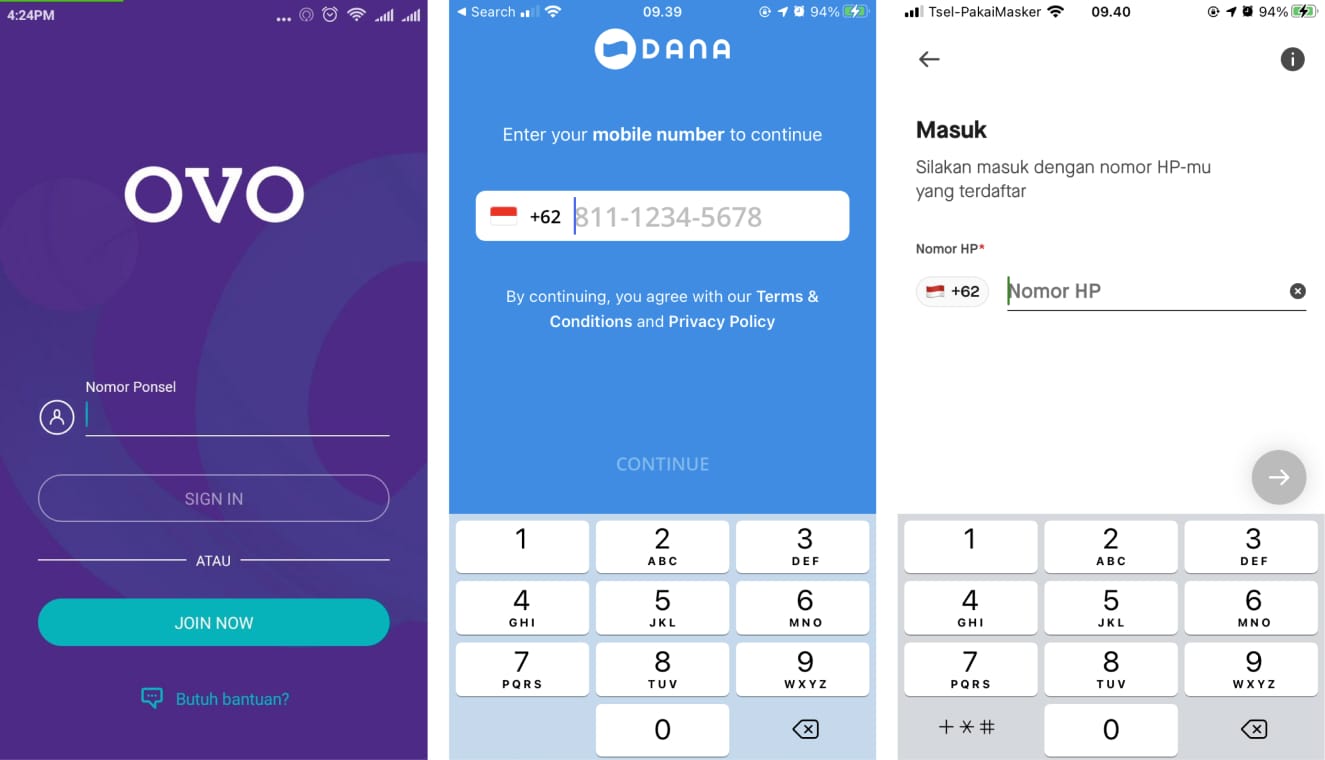
Because there are more people who own phone numbers than those who own bank accounts, Most signups only require the user's phone number. Most e-wallet apps in Indonesia provide basic mobile banking services, short-term loans and basic data analytics.
According to W3C, localization refers to the adaptation of a product, application or document content to meet the language, cultural and other requirements of a specific target market (a locale).
Some of the scope for localization includes:
There are some great external accessibility widgets out there like EqualWeb and Userway that we can integrate to provide accessibility options on our website.
It's important to take into account using an accessibility checklist on design processes like color contrast, color blind, text readability, component size, etc. There are plugins like Able or A11y on Figma to help the checking process. There are also IBM accessibility and Microsoft Inclusive Design that we can use as our baseline.
A great example from Microsoft, they applied strict rules that every feature should go through the accessibility testing team before they release new features (including their gaming sector XBox). We can apply that process (might need some adjustment depending on resource capability) as well to push our accessibility implementation.
It is almost impossible to design everything for everyone at one time. What we can do is make a plan and execute it step by step. Design is an iterative process, what we thought ideal today might be irrelevant tomorrow.
Empathy is an important trait in the design thinking process and it's important to talk to our users. This will help us to understand their perspectives and provide us with clarity on defining any inclusivity & accessibility problems. We might find unexpected yet useful insights that we could bring to stakeholders to break bias and convince them to build more inclusive & accessible solutions.
As a senior or design leader who has more experiences & awareness on accessibility, it becomes our responsibility to share the importance of accessibility and raise awareness. Make accessibility a relevant topic by sharing stories and business impacts to solidify accessibility integration as one of the organization standards.
It's our responsibility to consider all of these aspects upfront in order to make our product useful for a wide range of diverse users and deliver the most value.
By applying 'proper' inclusiveness and accessibility on our product will definitely add quality of value as a designer and benefit the company ROI as well, since the Southeast Asia market is huge which makes the growth potential higher.

